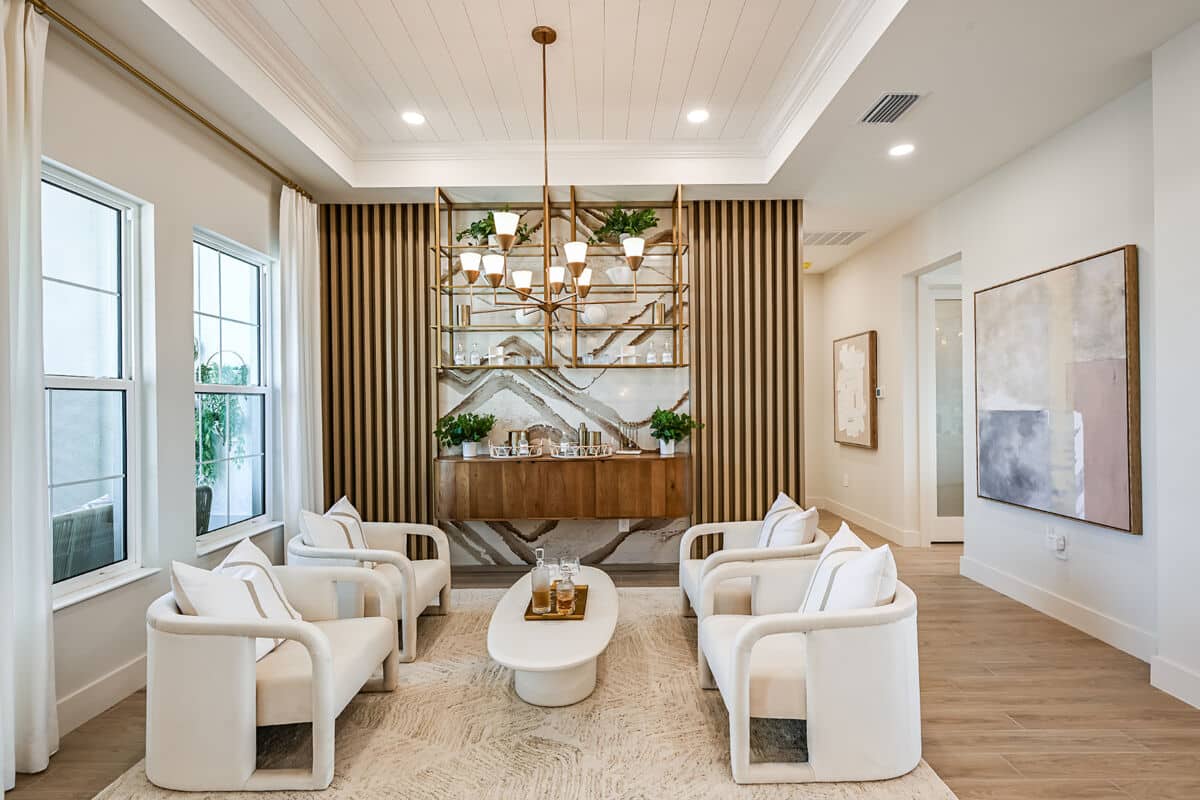Home decoration is often associated with aesthetics, colors, and trends. But in today’s world, decorating a space goes beyond looks—it’s about combining beauty with functionality. Functional decoration is all about making a space both beautiful and useful, creating environments that not only please the eye but also make everyday life easier and more efficient.
1. What Is Functional Decoration?
Functional decoration means designing your home in a way that every decorative element also serves a purpose. It’s about smart choices—furniture that saves space, accessories that offer storage, or lighting that improves both ambiance and utility. This approach blends design with daily convenience, offering solutions that look good and work even better.
2. The Benefits of Functional Decor
2.1 Better Use of Space
Especially in small homes or apartments, space is precious. Functional decoration helps optimize every square meter, transforming corners, walls, and furniture into active parts of the layout.
2.2 Organized and Clutter-Free Environment
Multifunctional furniture and smart storage options keep things in place, reducing visual clutter and promoting a calm, relaxing atmosphere.
2.3 Increased Comfort
When everything in a room serves a purpose and is placed for ease of use, it naturally enhances comfort and usability. It’s easier to move around, relax, or work without distractions.
2.4 Long-Term Practicality
Functional decor isn’t just trendy—it’s sustainable. It avoids unnecessary items and favors quality over quantity, which often saves money in the long run.
3. Key Elements of Functional Decoration
3.1 Multipurpose Furniture
Sofas with storage, foldable tables, ottomans that double as seats and storage units—all of these bring utility without compromising design.
3.2 Smart Storage Solutions
Shelves that follow vertical lines, under-bed drawers, hanging organizers, and built-in wardrobes can maximize space, especially in small rooms.
3.3 Lighting that Works
Good lighting is essential for any functional space. Use layered lighting—overhead lights for visibility, task lighting for work areas, and ambient lighting for relaxation.
3.4 Modular Design
Modular furniture and accessories can be rearranged easily, adapting to different needs over time. This is ideal for people who like to refresh their interiors without replacing everything.
3.5 Dual-Purpose Decor Items
Think mirrors that expand the space visually while adding brightness, rugs that define zones in open-plan layouts, or baskets that look decorative and hide everyday items.
4. Room-by-Room Functional Decorating Tips
4.1 Living Room
Choose a TV stand with shelves and drawers, a coffee table with storage, or a couch that converts into a guest bed. Keep the layout open to encourage movement and comfort.
4.2 Kitchen
Use vertical space for hanging utensils or spices. Consider a rolling island that offers extra prep space and can be moved when not needed. Keep countertops clear by storing small appliances inside cabinets.
4.3 Bedroom
Opt for a bed with built-in drawers or a headboard with shelves. Use bedside tables that include storage to avoid clutter and make nighttime routines more efficient.
4.4 Home Office
Choose a desk with built-in organizers. Use cable management solutions to keep wires out of sight. A pegboard on the wall can hold supplies and keep the workspace clean and productive.
4.5 Bathroom
Use floating shelves above the toilet or next to the mirror. Store toiletries in decorative boxes or containers. A mirrored cabinet can hold essentials while expanding the sense of space.
5. Functional Decoration for Small Spaces
Small homes require even more attention to practicality. Avoid heavy, bulky furniture and choose pieces with light tones and open designs. Use mirrors, transparent materials like glass or acrylic, and vertical lines to create an airy feel.
Furniture with more than one use—like a dining table that also functions as a workspace—can make the difference between a cramped room and a flexible, comfortable environment.
6. Minimalism and Functionality
Functional decoration often aligns with minimalist design. Minimalism encourages you to keep only what you use and love, which naturally leads to cleaner, more functional spaces. The focus is on quality, not quantity—choosing fewer but better items that add value to your home and life.
7. How to Start Decorating Functionally
- Analyze each room’s daily needs before choosing decor items.
- Declutter and eliminate unnecessary objects.
- Prioritize furniture and accessories that offer multiple functions.
- Choose storage solutions that blend into the decor.
- Always consider movement, access, and visibility in your layout.
8. The Future of Interior Design
As people spend more time at home—whether for remote work, study, or relaxation—the demand for functional decoration continues to grow. Homes need to be beautiful, but also adaptable, efficient, and personalized. Combining aesthetics with utility is no longer a luxury; it’s essential for modern living.
9. A Home That Works for You
Functional decoration proves that beauty and practicality can live in perfect harmony. By choosing pieces that serve a purpose and arranging them thoughtfully, your home becomes not just a place to look at, but a space to truly live in. It becomes easier to maintain, more enjoyable to use, and a true reflection of your lifestyle.
